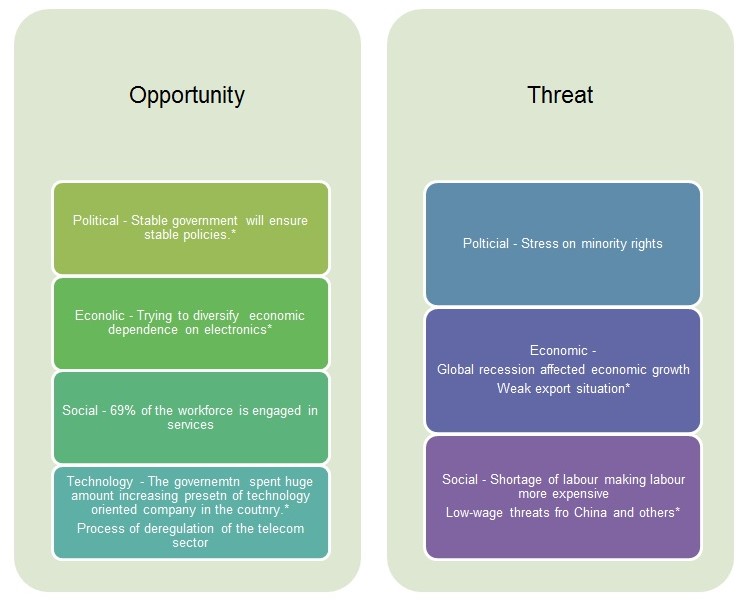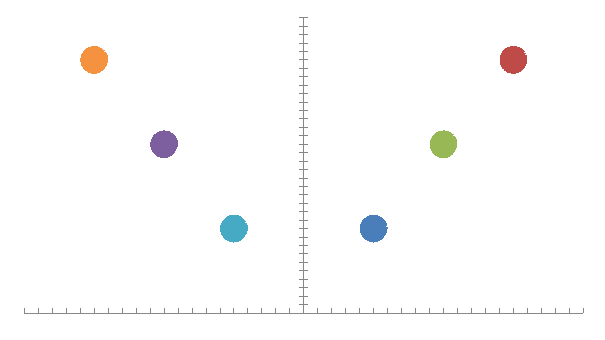Organizations need to change in order to sustain their competitive advantage. Therefore, the best organization who can adapt to the changing external and internal environment to maintain its position must learn from its surroundings (Senge 1990). It is mostly agreed upon that organizations today undergo change. Studies undertaken by Tushman et al. propose that most companies undergo periods of continuous incremental and irregular transformational change (John Hayes 2006 ). However, they also stress that:
- These changes at times occur with certain degree of regularity, which differ across sectors.
- They believe that in almost all industries, the rate of change is increasing and the time lag between periods of discontinuity is declining.
This paper is a case study analysis of the change that has been experienced by Singapore Telecommunications (SingTel) for the last 5 years i.e. from 2004 to 2009. SingTel is one of the leading telecommunication groups with its operations spread across 20 countries (Datamonitor 2009). The company has revenue of $10,066 million in 2008 which increased by 11% since 2007. The paper will first discuss the change process that has been experienced by SingTel and undertake a PEST analysis of the external environment to see which pose a threat and opportunity to the company.
Since 2003, SingTel had undergone tremendous change. A series of merger and acquisitions has been observed in the timeline of the company. In 2005, it acquired 100% stake at Reef Networks, which has fibre optic cable network in Australia. This was a definitive step towards expansion of operations in Australia. In 2006, it also acquired 74.15% stake in Virgin Mobile Australia from Virgin Group. This provided them the opportunity to become market leaders in Australian telecommunication market. In 2006, it also established it satellite-based broadband network in Maldives. In subsequent years, the companies entered into various agreements and collaborations with various companies in different areas related to communication. Further the organizational structure of the company was changes as observed from the Annual Reports of 2006 (SingTel 2006) and 2008 (SingTel 2009).
Political
Singapore has a parliamentary form of government and is a republic. The ruling party, which has been re-elected since 1959, is People’s Action party (PAP) and is presently headed by Lee Hsien Loong (U.S. Department of State 2008). However, there is certain political upheaval in a government, which is open about limited political liberalization (PRS Group 2008). The government usually follows a strategy of using the court as a means to blunt opposition (PRS Group 2008).
PAP government has improved the environment for business, presently faces no challenge from oppositions, and so may continue to frame policies to improve the condition. Singapore faces no serious terrorist threats (Narasimhan 2009). The government follows extremely stable macroeconomic policies. In addition, with no expectation of change in the government the policies will tend remain stable for a long time.
Economic
The economic condition of Singapore is expected to slow down (Narasimhan 2009). The global financial crisis and economic slowdown has greatly affected the country’s economy. According to the government data, the economy shrunk by 6.3% (quarter-to-quarter) in July- September period (PRS Group 2008). The economic slowdown in the US and Europe had a negative effect on non-oil sector and tourism industry. However the economy will continue to have strong demand from developing countries of Asia and is expected to sustain a growth rate of 4.5-6.5%in 2008 (PRS Group 2008; Narasimhan 2009). Inflation has increased and become 25 year high at 4.4% (year-on-year) in 2008, which was led due to an increase in cost of food, health, and transportation.
Singapore has an open investment climate with exceptions of foreign ownership in domestic banking and media sector (PRS Group 2008).
Social
The country has a 100% urban population with a population growth rate of 1.4 percent (PRS Group 2008). 69% of the workforce is engaged in services and 30 percent in industry. The city-state mainly comprises of Chinese (77%), Malay (14%), Indian (8%), and Other (1%). The languages spoken are Chinese, Malay, Tamil, and English. Recently the government has brought about changes in the labour regulations, which will bring down the cost for employers and provide and greater flexibility and supply in the labor market.
Technological
The government has aimed to invest in the city-state’s ability related to science and technology related ventures. This is a strategy taken to increase foreign direct investment (FDI) and diversify the economy (PRS Group 2008). The government has enforced no law wherein foreign companies must transfer technology to the domestic companies. The government also encourages and provides incentives to firms in order to increase automation and reduce dependence on labour intensive production.

Figure 1 shows the threats and opportunities faced by Singapore and how they can affect. From the above analysis of the external environment of the country, it can be observed that SingTel was facing competition and the market for the company was small for further development. Therefore, in order to grow it took advantage of the benefits that the environment gave and expanded. Thus, the change process that brought about in the company was observed as a process of adaptation to the changing forces in the external environment.

Figure 2 shows the positive and negative linkages between the opportunities and threats with the company’s prospects. The figure shows that global recession has the highest negative threat to the company, then weak export situation, and then low wage labour available in china. The positive linkages in order to highest to lowest are government trying to diversify economic dependence on electronics, the government spent huge amount increasing present of technology-oriented company in the country, and stable government will ensure stable policies.
Reference
Bohlund, M, Dahlstrom, M & Cameron, A 2009, ‘Asia Monitor: South East Asia vol. 2’, Business Monitor, Business Monitor International, [Retrievd from EBSCO Online on 6 November 2009], Richard Londesborough/Jonathan Feroze.
Datamonitor 2009, ‘Singapore Telecommunications Limited (SingTel)’, Company Profile, [Retrievd from EBSCO Online on 6 November 2009], Datamonitor, New York.
John Hayes, P 2006 , The Theory and Practice of Change Management, 2nd edn, Palgrave Macmillan.
Narasimhan, J 2009, ‘Singapore’, Global Insight.
Poh, LC 1994, The Liberalisation and Privatisation of Telecommunications in Singapore, Web.
PRS Group 2008, ‘Singapore Country Update’, Country Report. New York
Senge, PM 1990, The Fifth Discipline, 1st edn, Currency Doubleday, New York.
SingTel, Annual Report 2005-06, Web.
SingTel 2009, Annual Reports. Web.
U.S. Department of State 2008, ‘Background Note: Singapore’, Coutnry Profile, Bureau of East Asian and Pacific Affairs, Washington, DC.